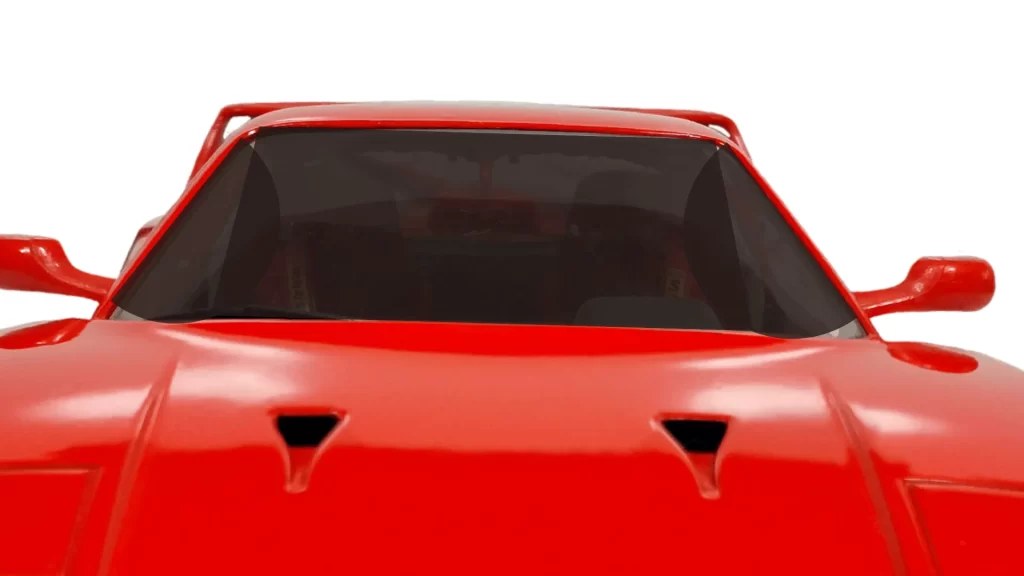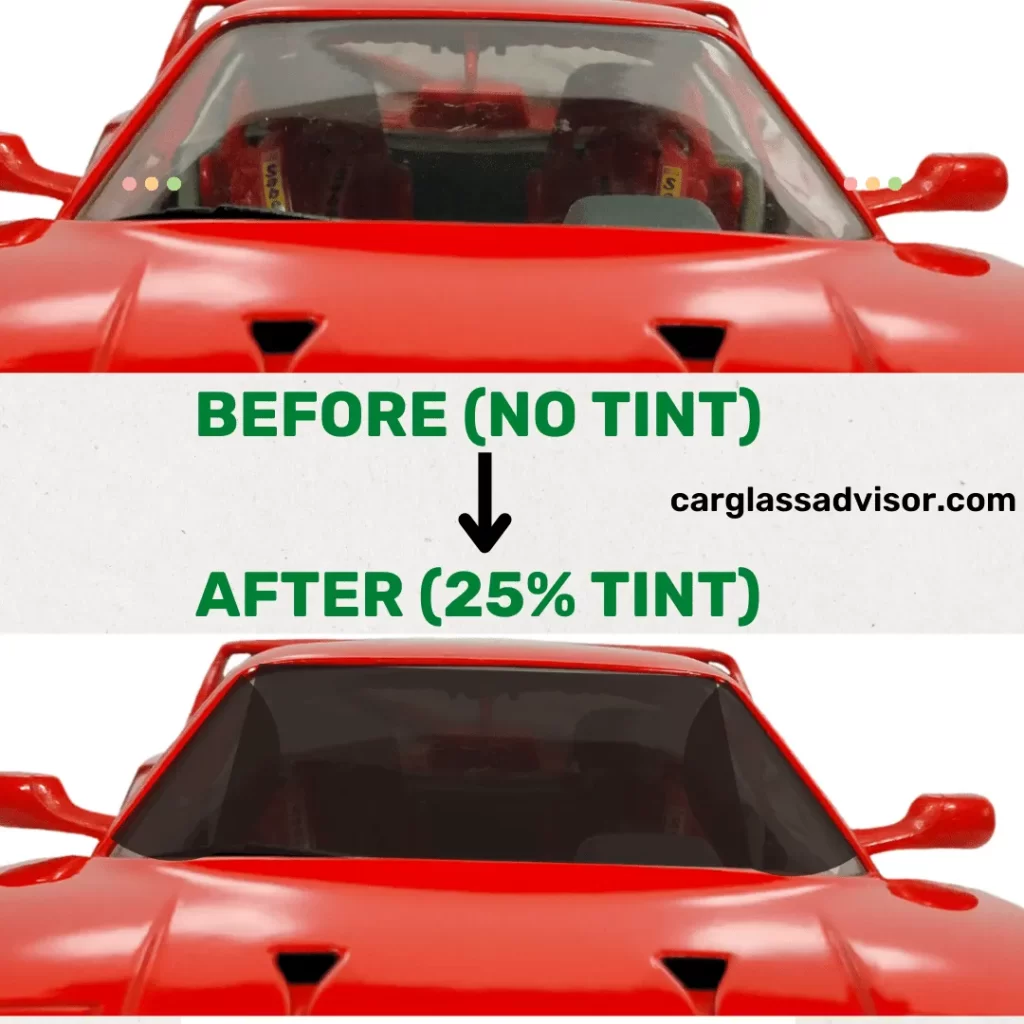A 25% tint on a car window allows 25% of light to pass through, while blocking 75% of light. While this level of tint is legal on the side and rear windows in many states, it is generally illegal to have 25% tint on the front windows of a vehicle in most states. However, there are a few exceptions, including Michigan, Arkansas, Montana, New Mexico, Washington, Oklahoma, and Texas. While 25% tint is effective at blocking out light, it can make it difficult to see through the window at night.
What does 25% tint look like?
From the inside of a car with 25% tint, the view out of the window may appear somewhat darker than normal. The amount of light that can pass through the tinted window is reduced, resulting in a slightly dimmer view. From the outside of the car, the 25% tint may appear slightly darker than the surrounding windows. The amount of light that can pass through the tinted window is reduced, giving it a slightly darker appearance.

It is important to note that the appearance of tint may vary depending on the specific type of tint and the lighting conditions. Overall, 25% tint is a moderate level of tint that provides some light blocking benefits, but may not completely obscure the view from inside or outside the car.
Car Window Tint Percentage Visualization Tool
Select a percentage value from 1 to 100 to see how dark it is:
Selected Percentage:
Use the basic window tint visualization tool above to see how dark 25% tint is. Set the value to 25 and the tool will simulate the tint percentage for the most common black tinting film. However, for other tint colors, use our advanced tint percentage visualization tool. That said, the car picture below shows the comparison between no tint and 25% tint.

Can you see through 25% tint at night?
During the daytime, it may be possible to see into the interior of a car with 25 percent tint, but only if you are standing relatively close to the vehicle. However, when the lighting conditions are low or it is nighttime, the tint will be more difficult to see through because the lower the visible light transmission (VLT) is, the more light is blocked. This means that when driving at night, it will be more challenging to see through a car that has a 25 percent tint applied.
How much does 25% tint cost?
It is difficult to accurately estimate the window tinting cost of 25 percent tint without knowing the specific details of the vehicle and location where the tint will be applied. Factors that can affect the cost include the size and type of car, the quality of the tint film being used, and the location and reputation of the installation company. Tinting the windows of a small car may cost anywhere from $100 to $300, while tinting the windows of a larger vehicle may cost $200 to $500 or more. I recommend shopping around and get quotes from multiple companies before making a final decision.
Is 25% tint worth it?
It is ultimately up to the individual to decide if 25% tint is worth it to them. Some people may find that the added privacy and protection from the sun's harmful rays is worth it, while others may prefer a lighter tint or no tint at all. It is important to also consider any laws or regulations regarding tint percentage in your area.
25 vs 30 percent window tint
25 percent window tint refers to a film that allows 25 percent of light to pass through the windows, while 30 percent window tint allows 30 percent of light to pass through. The fundamental difference between these two tints is the amount of light that is allowed to enter the car, with the 30 percent tint allowing slightly more light in. In terms of visibility and privacy, the 25 percent tint may provide slightly more privacy and reduced visibility from the outside, while the 30 percent tint may offer less privacy and slightly better visibility. It is important to consider the specific needs and preferences of the individual when deciding between 25 and 30 percent or any other percentages of window tint.
Conclusion
Using a 25% tint on a car window is a popular choice for many individuals looking to block out light and reduce glare while driving. This type of tint allows 25% of light to pass through the window, while blocking 75% of light. While this level of tint may be useful for reducing light and glare during the day, it can present challenges when driving at night. In most states, the use of 25% tint on the front windows of a vehicle is illegal, except for Michigan, Arkansas, Montana, New Mexico, Washington, Oklahoma, and Texas. However, the use of 25% tint on the side and rear windows is generally allowed in many states. It is important to be aware of the tint laws in your state to ensure you comply with regulations.

